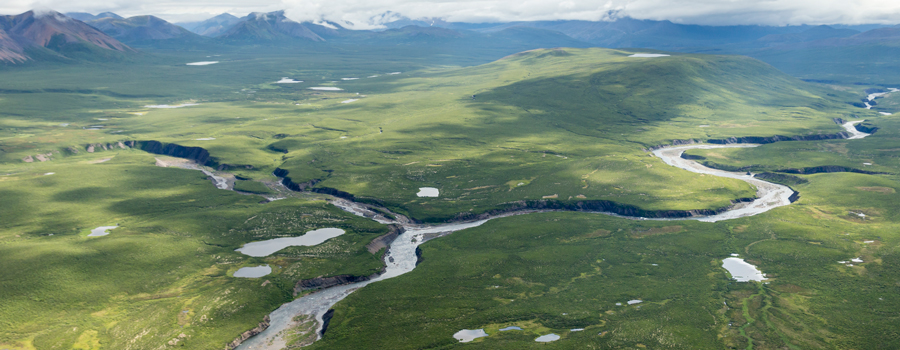
© Parks Canada / Fritz Mueller
Fish
Nááts'įhch'oh National Park Reserve
Nááts’įhch’oh National Park Reserve does not yet have regulations to enable fishing. As a result, visitors are not allowed to fish in any lakes, rivers, or streams during their stay. Only harvesting by local Indigenous traditional users is permitted at this time.
Nááts’įhch’oh National Park Reserve’s cold, clear waters provide excellent habitat for fish. They live throughout the headwaters of the area’s three major rivers: Pı̨́ı̨́p'enéh łéetǫ́ǫ́ Deé (Broken Skull), Tehjeh Deé (South Nahanni), and Łáhtanįlį Deé (Little Nahanni).
Rocky, fast-flowing streams carrying snowmelt provide ideal conditions for Arctic grayling, which depend on the high dissolved oxygen content in very cold water. Small aquatic insects cling to submerged rocks, providing food for the slimy sculpins that are found in the park’s streams and lakes. The still and clear waters of lakes like Ǫtaa Tué Fehto (Divide Lake) offer some of the best opportunities to observe fish in their aquatic habitats. Expect to see schools of tiny minnows as well as large, solitary adults scanning for food.
Research by Parks Canada and Fisheries and Oceans Canada has identified four fish species in Nááts’įhch’oh National Park Reserve: slimy sculpin, Arctic grayling, burbot, and lake trout. Relatively few species exist here because geographic barriers prevent most fish from migrating upstream into these mountains. Náįlįcho (Virginia Falls) in neighbouring Nahanni National Park Reserve is a prime example; this powerful, 96 meter cascade on the Nahanni River is impossible for fish to ascend.
Related links
- Date modified :